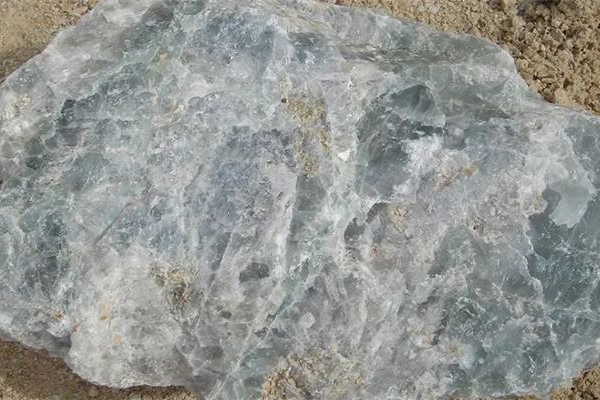As an important strategic resource, fluorite is widely used in many fields. The main gangue minerals of fluorite are as follows: calcite, quartz, barite, and sulfide minerals, which usually affect the grade and recovery rate of fluorite, and they need to be separated by mineral processing.
Discuss the mineral processing and separation methods of fluorite and common gangue minerals.
Fluorite and Calcite
Calcite is a carbonate mineral containing calcium carbonate that has a similar crystal structure and density to fluorspar. Calcite has good buoyancy under weakly acidic or neutral conditions, but poor buoyancy under strong acidic or strong alkaline conditions. Separating fluorspar and calcite is a common mineral processing problem because both minerals contain active Ca2+ ions, causing them to have similar planktonic properties.
In order to achieve effective separation, appropriate flotation methods and reagents are required. The following are several methods for separating fluorite and calcite:
- Adsorption washing flotation method: This method utilizes sodium lauryl sulfate as a collector and then separates them by washing and flotation. This method can achieve high grade fluorspar concentrate.
- Amide collector flotation: This method utilizes an amide collector such as oleoyl sarcosine as a collector and corbachole as a depressant at pH 8–9 . This method can obtain acid grade fluorspar concentrate from raw ore containing more than 6% calcite.
- Citric acid-sodium fluoride-linoleate flotation method: This method uses citric acid as an inhibitor, sodium fluoride as a regulator, and linoleate as a collector, and floats under the condition of pH 9 select. This method allows a highly selective separation of fluorite and calcite.

Fluorite and Quartz
Quartz is a silicate mineral containing silicon dioxide that has a different crystal structure and density than fluorspar, but has similar buoyancy properties. Quartz has better buoyancy under neutral or weak alkaline conditions, but poor buoyancy under strong acid or strong alkaline conditions.
The following methods can be used when achieving the separation of fluorite and quartz:
- Adjust the pH between 8-9 with sodium carbonate, collect fluorite with fatty acid, and suppress quartz with water glass.
- Glucose or tannin extract is used as the activator of fluorite, barium oxide is used as the inhibitor of quartz, and fatty acid is used as the collector of fluorite.
- Water glass, alkaline starch and sodium hexametaphosphate are used as mixed inhibitors, saponified oleic acid is used as rougher collector of fluorite, and water glass and citric acid are used as cleaning mixed inhibitors.
Fluorite and Barite
Barite, a sulfate mineral containing barium sulfate, has similar buoyancy properties to fluorspar. Barite has good buoyancy under neutral or weak alkaline conditions, but poor buoyancy under strong acid or strong alkaline conditions. Therefore, in the flotation process, the appropriate pH value and inhibitor should be selected according to the nature of the raw ore and the target grade.
- Sodium sulfate and alkaline starch were used as mixed inhibitors and TF2-8 was used as collector to inhibit barite at a pH of about 8.5.
- Glucose or tannin extract is used as the activator of fluorite, barium oxide is used as the inhibitor of barite, and fatty acid is used as the collector of fluorite.
- Using plant extracts and sodium fluorosilicate as inhibitors and sodium oleate as collectors, fluorite and barite were floated under neutral conditions.

Fluorspar and Sulfide Minerals
Sulfide minerals refer to metal compounds containing sulfur, such as pyrite, galena, sphalerite, etc. Sulfides have better floatability under neutral or slightly acidic conditions, but poorer floatability under strongly acidic or strongly alkaline conditions. The following methods can be used when separating fluorspar and sulfide minerals:
- Use xanthate to capture sulfide, use fatty acid to capture fluorite, and use water glass or alkaline starch to suppress sulfide.
- Using citric acid as inhibitor, sodium fluoride as regulator and sulfonic oleic acid as collector, fluorite is selectively floated.
summary
The above is the introduction of the mineral processing and separation method of fluorite and gangue minerals. In actual production, due to the different properties and grades of raw ore, it is necessary to select the appropriate flotation method and agent according to the specific situation. Therefore, it is very important to conduct mineral processing tests to determine the appropriate process parameters and dosage of chemicals, improve the recovery rate and grade of fluorite, and reduce production costs and environmental pollution.
